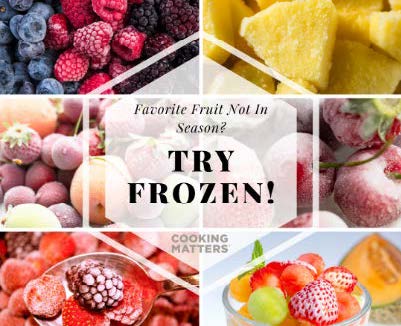In this edition
- Charity Scams
- Packaged Food Hacks
- The Freezer is Your Friend
About the Newsletter
Fall is in the air! October's newsletter discusses charity scams and how to make sure the donations you give are to a credible organization. Also, learn how to shop smarter using packaged food hacks, your freezer and shopping store tips.
Charity Scams
With the holidays around the corner, ‘tis the season for gift giving; however, is it really a gift you want to give?

A stick man dragging a holiday package with a lasso.
Charity fraud schemes seek donations for some organizations that do little or no work—instead, the money goes to the fake charity's creator. While these scams can happen at any time, they are especially prevalent around the holidays. Criminals often use the holidays to play on our emotions and empty our pocketbooks.
To avoid becoming a victim of holiday charity scams the Federal Communications Commission recommends the following:
- Donate to trusted, well-known charities. Beware of scammers who create fake charities. Always verify a charity's legitimacy through its official website. If you have doubts, you can check with the Better Business Bureau's Wise Giving Alliance, Google Charity Navigator, Charity Watch, or GuideStar.
- Check with the National Association of State Charity Officials on whether charities must be registered in your state and, if so, whether the charities contacting you are registered.
- Verify all phone numbers for charities. If you need to contact a charity by phone or using text to donate, check the charity's official website to see if the number you have is legitimate.
- Do not open suspicious emails. If you receive a suspicious email requesting donations or other assistance, do not click on any links or open any attachments. Scammers regularly use email for phishing1 attacks and spreading malware.
- Verify information in online solicitations. Double-check any social media solicitation for charitable donations before you give. Crowd-funding websites often host individual requests for help, but they are not always reviewed by the site or other sources to ensure legitimacy.
One more reminder: Scammers often spoof2 phone numbers that appear in your caller ID display and try to trick you into answering the phone or responding to a text. They might try spoofing a legitimate charity's number or use a local number, so you'll think the caller or texter is someone you know. Don't answer calls or respond to texts from unknown numbers. And if you answer such a call, hang up immediately.
If you suspect a scam, call the AARP Fraud Watch Network™ at 877-908-3360. This is a toll-free service that is available Monday through Friday, 8 a.m. to 8 p.m. Eastern Standard Time.
1Phishing is the fraudulent practice of sending emails or other messages claiming to be from reputable companies to convince individuals to reveal personal information, such as passwords and credit card numbers.
2Spoofing is the act of disguising a communication from an unknown source as being from a known, trusted source. Spoofing can apply to emails, phone calls, and websites, or can be more technical, such as a computer spoofing an IP address.
Natalie Mazzullo is the healthy aging initiative coordinator at the University of Nevada, Reno Extension and sits on the Governor’s Commission on Aging.
Packaged Food Hacks
Make ready-made meals more filling with these quick tips.

Ramen Noodles
 Frozen Pizza
Frozen Pizza
 Breaded Chicken
Breaded Chicken
Boxed, Canned or Frozen Dinners
Bulk up ramen, rice or pasta with vegetables and lean meat for a more satisfying meal.
Frozen Pizza
Make a regular cheese pizza more filling by topping it with your favorite cooked vegetables and lean protein, like turkey sausage.
Frozen Breaded Chicken or Fish
Look for versions with less sodium and saturated fat. Enjoy with a salad and sweet potato fries for a balanced meal.
For more simple swaps, visit Cooking Matters
The Freezer is Your Friend

Frozen fruit
Try buying frozen fruit when your favorites aren’t in season. Blend into smoothies.
Save money by buying the refrigerated or frozen family-size bag of chicken.

Cooked chicken pieces
For more tips visit Cooking Matters.
Tips for Shopping Trips
Shop Smarter. Follow these tips to save time and money on your next journey to the grocery store.

Shopping Cart
All Forms Count
Fresh, frozen, and canned fruits and veggies are all great options. See if you
can find low or no-sodium options.
Shop in season
Choose fresh fruits and vegetables that are in season to save money.
Compare Unit Prices
Items are packaged in different sizes and amounts, so examining cost per unit is the best way to compare prices.
For more tips visit Cooking Matters

SNAP-Ed logo
An EEO/AA institution. This material was funded by USDA’s Supplemental
Nutrition Assistance Program (SNAP). This institution is an equal opportunity provider.
Visit Nevada SNAP-Ed


